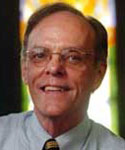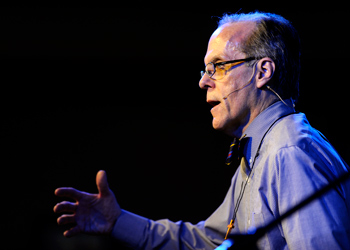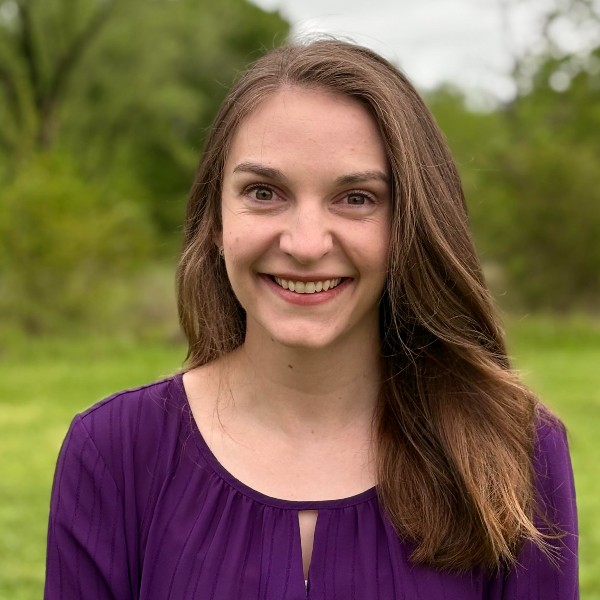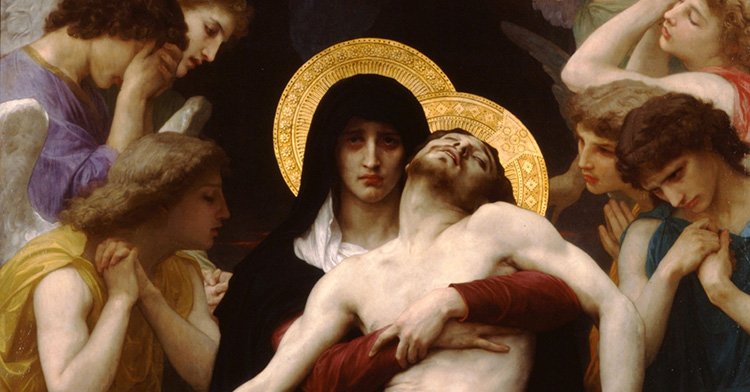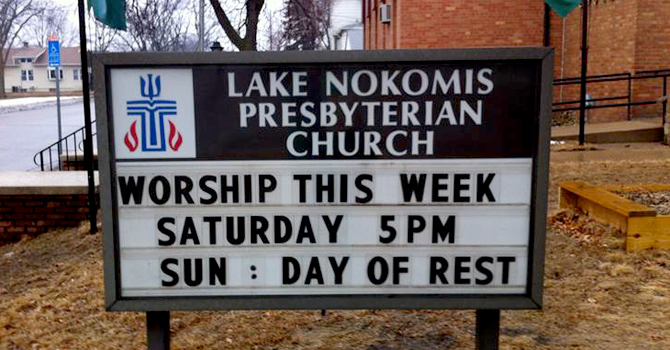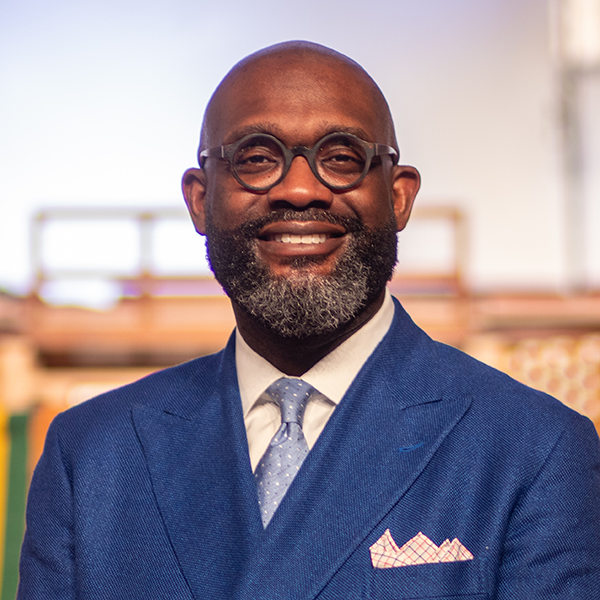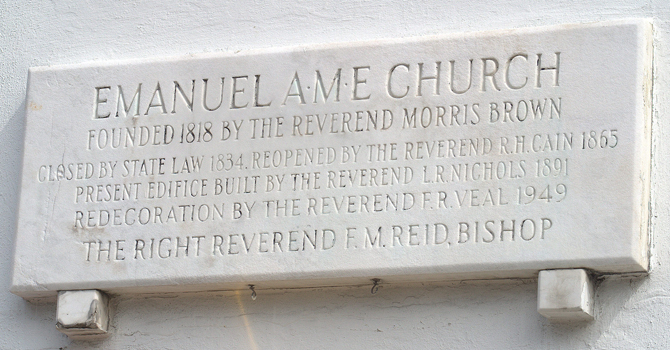Editor’s note: Faith & Leadership offers sermons that shed light on issues of Christian leadership. This sermon was preached at Hyde Park United Methodist Church in Tampa, Fla., on April 8, 2012.
It is “the Word of God for the people of God,” but you have to admit that it’s a shabby way to end the Gospel.
“So they went out and fled from the tomb, for terror and amazement had seized them; and they said nothing to anyone, for they were afraid” (NRSV).
What kind of an ending is that? Anybody who has ever showed up for worship on Easter Sunday morning could do a better job of it. Just imagine what would happen if we concluded this service with that kind of fearful whimper instead of a joyful shout. You’d be looking for some other place to worship next Easter.
You can’t blame Christians in the second and fourth centuries for trying to improve on it by adding their own endings, each one just a little better than the last one. But most scholars agree that this is where Mark ends. In the Greek text, the final word is a dangling conjunction, like ending an English sentence with “and then …”
I’m glad that Matthew, Luke and John tell more of the story. But I’m also grateful that Mark left us with this dangling non-ending, because that’s often the way it is with my life.
As hard as I try to put a reliable period or a powerful exclamation point at the end of every line, I keep ending up with a lot of incomplete sentences:
relationships that don’t get healed,
fears that never go away,
doubts that defy simple answers,
temptations that return with disturbing regularity,
economic, social and racial injustice that never gets resolved,
hopes that are dashed on the rugged rocks of reality,
dreams that I may not see fulfilled,
dramas that never see the final curtain fall.
Mark’s incomplete ending feels like an invitation to step onto the stage and see where the story will take us.
The preceding act has ended with a simple declarative sentence. It’s like something Hemingway would have written. “Mary Magdalene and Mary the mother of Joses saw where the body was laid.” Period. The end. The curtain falls. The lights go out. The stage is left in silence for the Sabbath.
The curtain rises again on the first day of the week. It is the day after the Sabbath. Think Monday morning. Get the feeling of going back to the same old grind in the same old world in the same old way. Three women walk onto the stage. They’re going to finish the embalming of the dead body of Jesus that had been left uncompleted on Friday.
It was gruesome work, but they knew what to do with a corpse. What they didn’t know is who would roll away the stone from the entrance to the tomb. When they found the stone had already been rolled away, it was the shocking, unanticipated disruption of everything they knew or expected. No wonder it scared the daylights out of them.
Mark says they saw “a young man” sitting at the entrance, like an usher waiting for people to leave the theater after the performance. He told these shellshocked women, “Don’t be afraid. You’re looking for Jesus. Sorry, but he’s not here. He’s been raised. He left you a message. He said to tell you that he is going ahead of you to Galilee. That’s where you’ll see him. You need to get moving if you want to catch up with him.”
That’s it. No bold doctrinal affirmation, no scientific evidence for the transformation from rigor mortis to resurrection -- nothing but the announcement that the Jesus who had been crucified had been raised from the dead, nothing but the promise that he was already out there ahead of them, headed back into the world out of which they had come, and that they would find him there.
Let’s get it straight that Easter is not just the remembrance of something that happened in the past. It is the good news that the risen Savior is alive and is on the road ahead of us. We will not find him
in the tomb of our broken dreams and shattered expectations,
in the graveyard of defeats and failures,
embalmed in some experience in the past.
We will find him out ahead of us on the road that leads to a radically new tomorrow.
If you’ve worshipped in our chapel, you’ve seen the stained-glass image of the risen Christ that is above the altar. Beneath him are the words “Come Unto Me.” It’s the gospel invitation for all of us, any of us, to come to Jesus, to receive the saving grace and redeeming love that God has given us in him.
But those of you who have been around for a while know that’s not the way the chapel was originally built. We turned the whole thing around in the renovations a decade ago. Originally, that window was over the doors that opened directly onto Platt Street. The only time you could see Jesus or hear his words was when you were headed out the door.
I’ve always wondered if perhaps the artist had heard the young man at the tomb say, “He isn’t here. He is going ahead of you.” I’ve wondered if the artist intended for us to hear the risen Christ saying, “Come unto me. I’m out here on Platt Street, headed off into the city. I’m going ahead of you, and that’s where you will find me.”
I have good news for you today. It’s the same good news that was given to those frightened women at the tomb.
Don’t be afraid! He has been raised, and he goes ahead of you into the ordinary, everyday places where you live and work, laugh and cry, suffer and rejoice, succeed and fail. He goes ahead of you, and if your eyes are prepared to see and your ears are tuned to hear, you will find him there.
Don’t be afraid! He has been raised, and he goes ahead of you through death into life everlasting. Followers of the risen Savior face the awful reality of death in the awesome assurance of new life in the resurrection. We sang it this morning:
Soar we now where Christ has led,
Following our exalted Head.
Made like him, like him we rise,
Ours the cross, the grave, the skies.
Don’t be afraid. The risen Christ goes before you into all of the incomplete, unfinished, confused and conflicted dramas of your life. And if you have trained your eyes to see, you will find him there.
There’s a catch in all of this, of course. If you’re going to find him, you have to know who you are looking for. The way we open our eyes to see and tune our ears to hear is by participating in the practices of discipleship that form us into the likeness of Christ and enable us to see where he is going and to know what he is doing.
But Mark says the women fled in terror. They said nothing to anyone, because they were afraid.
They got over it, of course. You can read about that in the other Gospels and the book of Acts. But for the moment, they were scared stiff, immobilized with fear. And if we tell the truth, it’s usually some kind of fear that holds us back, that blocks our way, that keeps us from following Jesus and becoming the agents of his life and love in this world:
fear of failure,
fear of rejection,
fear of the risks involved,
fear that it might actually cost us something to follow Christ.
But to experience resurrection is to discover that we, like those women, are sent out to complete the story that Mark left hanging with that clumsy conjunction, “and then …” Having seen the empty tomb, we are called to become the living expression of the life of the risen Christ in this world.
You never know where the risen Christ will show up, or who will be the voice that says, “Don’t be afraid. He’s going ahead of you.”
One hundred thirteen years ago, this church began with a small group of Methodists who crossed the river from downtown Tampa to share the love of Christ with people who were moving into the new neighborhood known as Hyde Park.
Ten years ago, we began to hear God calling us to “cross the river” again, in order to “make God’s love real” to a new population moving into downtown Tampa and to participate in the healing and rebirth of the urban core of our city. Over the past year, an amazing team of leaders has been studying what that ministry might look like and envisioning the way we might engage in it.
I’ll confess that it had all become a little daunting to me. The truckloads of information, the diversity of options, the unanswered questions … I had gotten bogged down, perhaps even fearful of all of it.
Then last Monday I was in a meeting in which one of the young leaders of our church caught the vision and said, “What are we waiting for? God is going to accomplish his work downtown with or without us. I hope it is with us!”
It was like hearing a young man at an empty tomb saying, “Do not be afraid! He goes before you.” We don’t have all the answers, and we don’t know where it all might end, but we know that the risen Christ goes before us and that we find him there.
The invitation for each of us on Easter morning is to listen for the voice that says, “Do not be afraid. You seek Jesus, who was crucified. He is not here. He has been raised. He is going ahead of you into the real places of your daily lives, and if you train your eyes to see him, you will find him there.”
We are called to a new commitment to follow the risen Christ into the future and to allow our lives to be the continuation of the story that Mark left dangling with the words “and then …”
I don’t know much about opera except that it isn’t over until a certain lady sings. But I know that Giacomo Puccini was one of the all-time great Italian composers. He began work on “Turandot” in 1920, but before he could complete the work, he was diagnosed with throat cancer and then died of heart failure. Puccini’s protégé Franco Alfano took on the task of completing the opera based on Puccini’s outlines.
The first performance was at La Scala in Milan on April 25, 1926. Arturo Toscanini, the greatest conductor of the time, held the baton. When they reached the point in the opera where Puccini’s work ended, Toscanini abruptly stopped the performance, laid down his baton, turned to the stunned audience and said, “Here the maestro died.” He walked away from the podium, the curtain came down, and the astonished audience went home with the uncompleted opera haunting their minds.
The next day, the orchestra, performers and audience returned to the opera house and completed the opera with Alfano’s ending. And that’s the way it’s been performed ever since. After the first service, someone who knows more about opera than I do told me that there are other endings, written by other musicians, just the way other endings were tacked onto Mark’s Gospel.
Mark’s dangling non-ending of the Gospel offers the invitation to each of us to complete the resurrection story with our story, to allow our lives to become the living witness to the presence of the risen Christ.
It may be a shabby way to end the Gospel. But it’s a wonderful way to live!
© Hyde Park United Methodist, 2012. All Rights Reserved.

